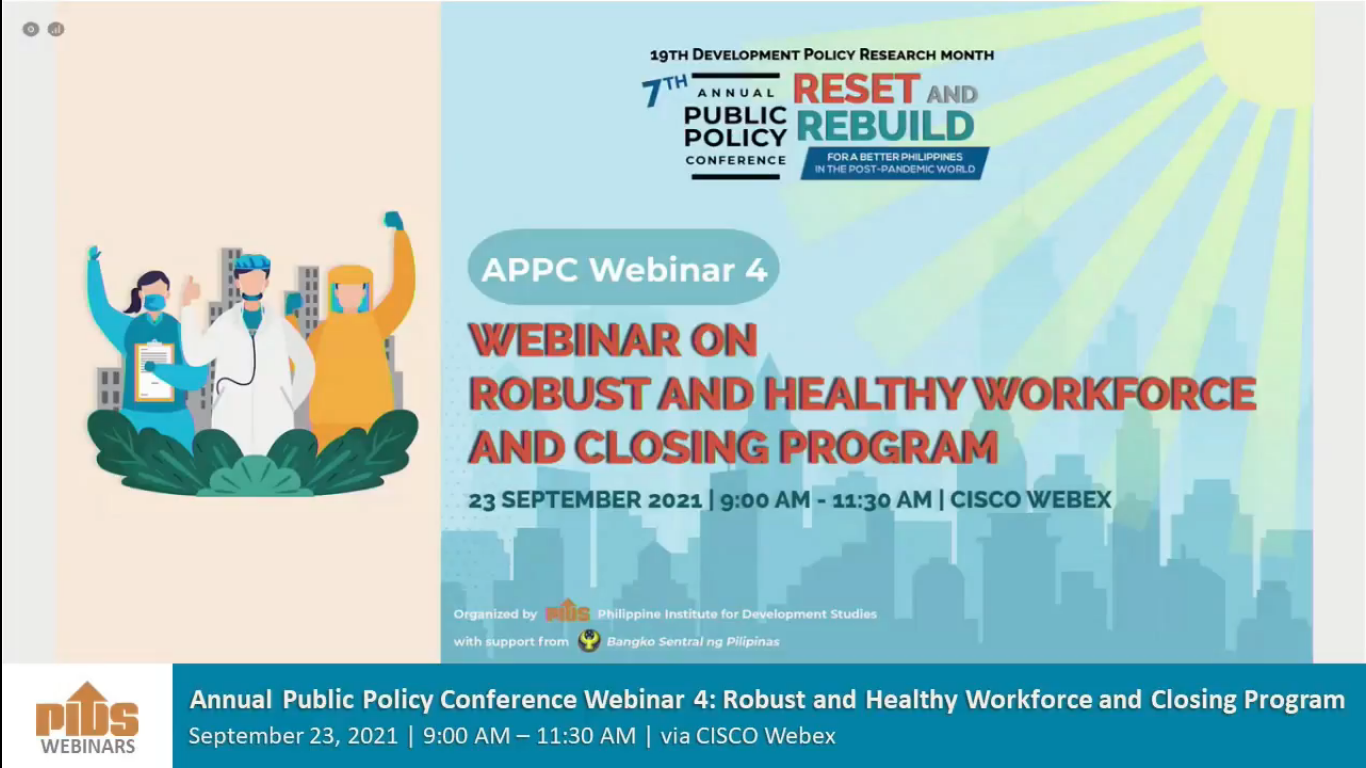A major part of the so-called “gig economy” is platform work, commerce in labor, assets, and services done through a variety of digital platforms; Upwork, Airbnb and Grab are familiar examples among hundreds or even thousands of others. Platform work was absorbing a significant proportion of the Philippine workforce due to youthful preferences and a shortage of reasonable conventional job opportunities even before the pandemic, and has grown in importance since. As it is wont to do with socioeconomic developments that should have an impact on government policy, the Philippine Institute for Development Studies (PIDS) recently carried out research to attempt to put some practical dimensions to the phenomenon.
The study made a number of interesting, though unsurprising findings. Platform work tends to attract younger workers and women, the two demographic segments who are most likely to be driven by either preference or necessity for the perceived flexibility of platform work. Similar to the impressions about the Philippines’ lower competitiveness in the business process outsourcing (BPO) realm, a higher proportion of Filipino platform workers are doing lower-value jobs such as clerical work and data services than in competitive populations; about 25 percent, compared with less than 10 percent in Bangladesh, India, Indonesia and Pakistan. Conversely, only about 14 percent of Filipino platform workers are doing high-value software development and technology work, compared with 45 to 59 percent of those in Pakistan, Vietnam and India.
Pay varies widely depending on the location of the platform — international platforms pay much more for even simple work than local platforms pay for more complex jobs — and the nature of the work performed, but in general is significantly higher than wages for standard jobs here, even at the professional level. This advantage is tempered somewhat, however, by the fewer work hours available, either as a result of the availability of work, or the worker’s other activities.
The wage disparity for women also seems to be absent in platform work, or if anything, favors women slightly, in contrast to standard jobs, where their pay lags that of their male counterparts by 10 to 11 percent on average.
In spite of the relatively better pay, the study’s findings suggest that almost no one doing platform work considers it a permanent form of employment, but only something to be done until a “regular job” becomes available, or as a mere supplement to other work. At the most basic level, it is because platform work is designed to be impermanent, a point the study largely missed; the majority of platform work is engaged on a piece or project rate basis, with very few involving any sort of timebound contract arrangement.
What the study did pick up on is that pay is really the only compensation platform workers can expect; most such jobs, in addition to lacking the security of some kind of formalized employment relationship, do not offer benefits such as health insurance or social security contributions — unless the worker sees to those on his own — and lack basic protections such as grievance mechanisms, minimum working conditions standards, or workers’ compensation. Another critical issue, in fact one of the report’s key conclusions and recommendations, is that one’s skills and/or experience upon entering the platform work ecosystem determine the level one can expect to remain at, as there is little to no upward mobility. Put a bit more bluntly than the PIDS report, platform work is — again, because of its “permanent impermanence” — a dead-end job. Whether you are a merely adequate data-entry drone or a skilled software developer, whatever level you start with is likely to be where you’ll remain; there may be horizontal mobility among work platforms, but there is very little prospect of vertical mobility.
The PIDS study does not make a judgment whether the extent and continued growth of platform work is a good thing or not, and whether or not it should be considered an integral part of the economy, but rather gives the impression that it is something we’re stuck with and may as well try to work with to mitigate the obvious shortcomings of the ecosystem with respect to Filipino workers.
To that end, it makes four broad recommendations. One, create an ecosystem for skills and talent development; translated into practical language, this means developing a “national competency framework to assess the existing capabilities of the country’s current workforce and to adjust these to the current and emerging needs of the global and local markets.” Two, develop some form of ongoing training support or continuing education to keep workforce skills current as demand evolves; this is a good point, as it is something that is lacking even in training for more conventional vocations. Three, strengthen social protections for platform workers; this is an issue that has already been raised, with recent calls to apply basic labor regulations to delivery app workers. Finally, the researchers recommend “improving the visibility” of platform work, primarily to be able to obtain better data about it in order to help guide policy and identify knowledge gaps.
This last recommendation may be the most important, because “normalizing” platform work, or changing mindsets to regard it as “legitimate” or “regular” work rather than a largely informal, stopgap form of employment, will go a long way toward extracting greater value from it, both from the individual worker’s perspective, and as a broader economic driver.










